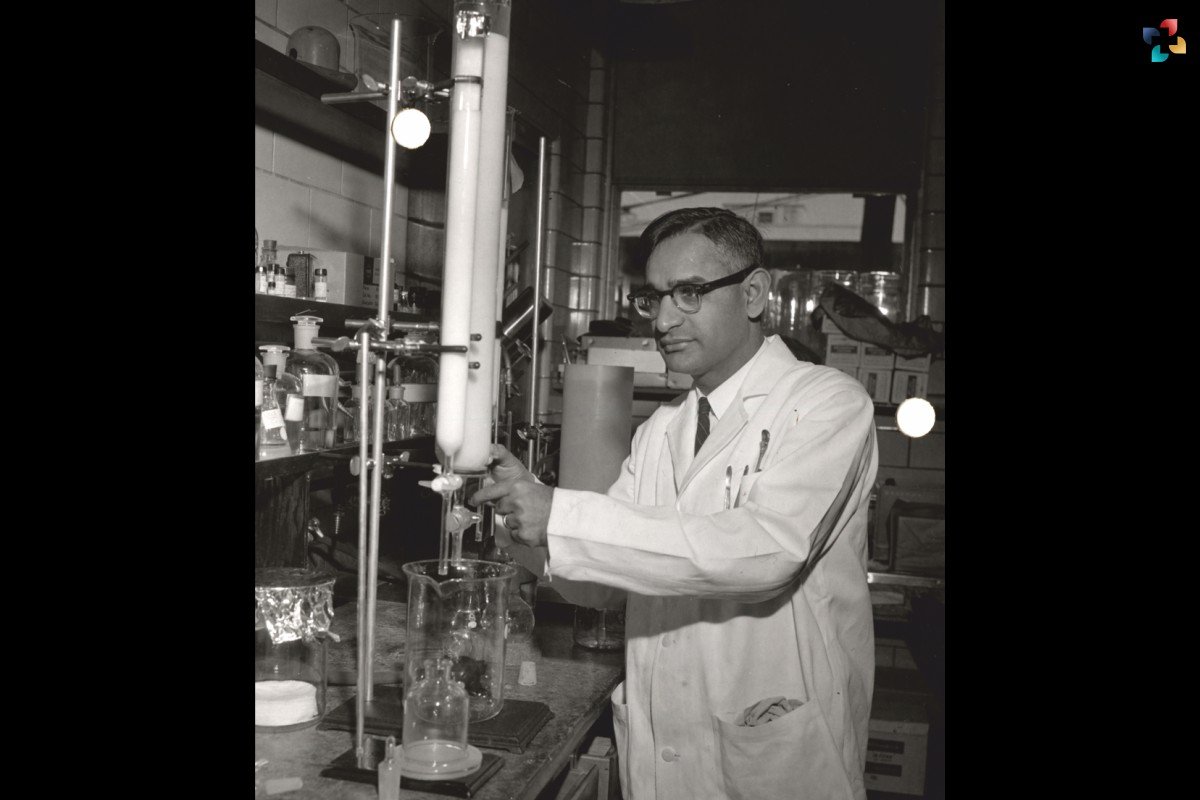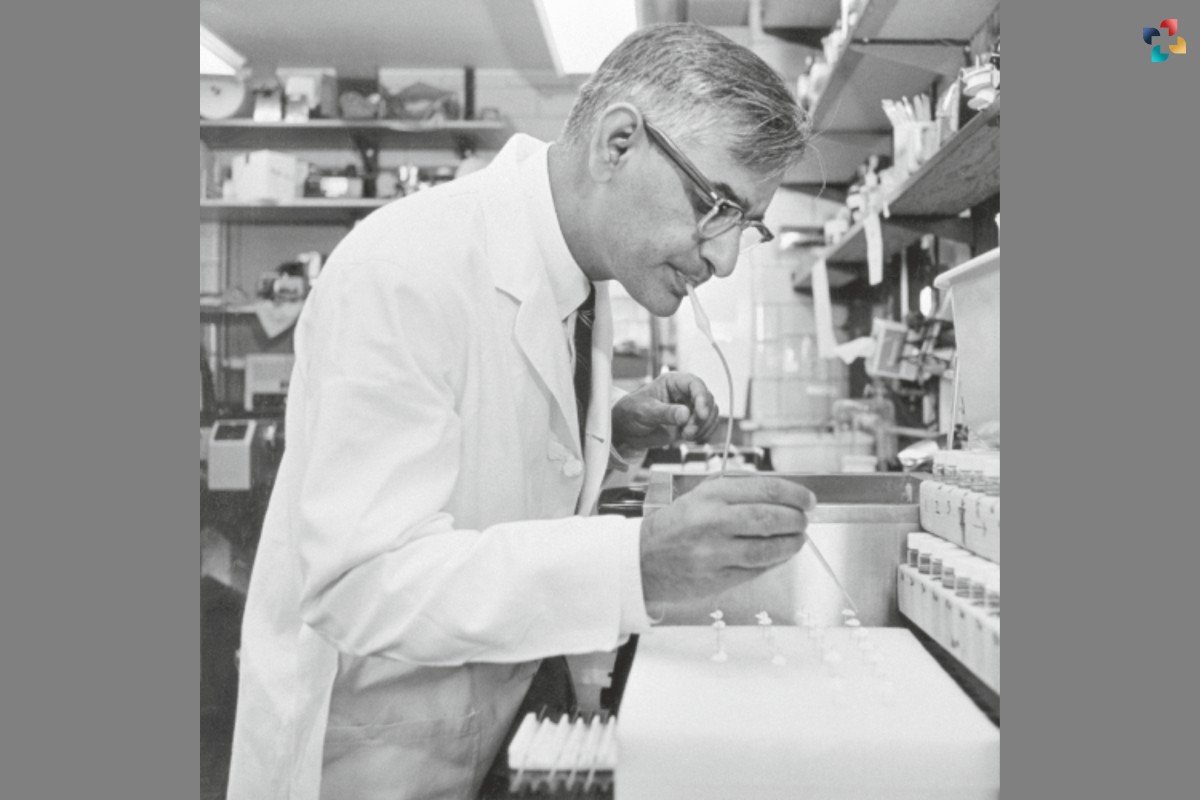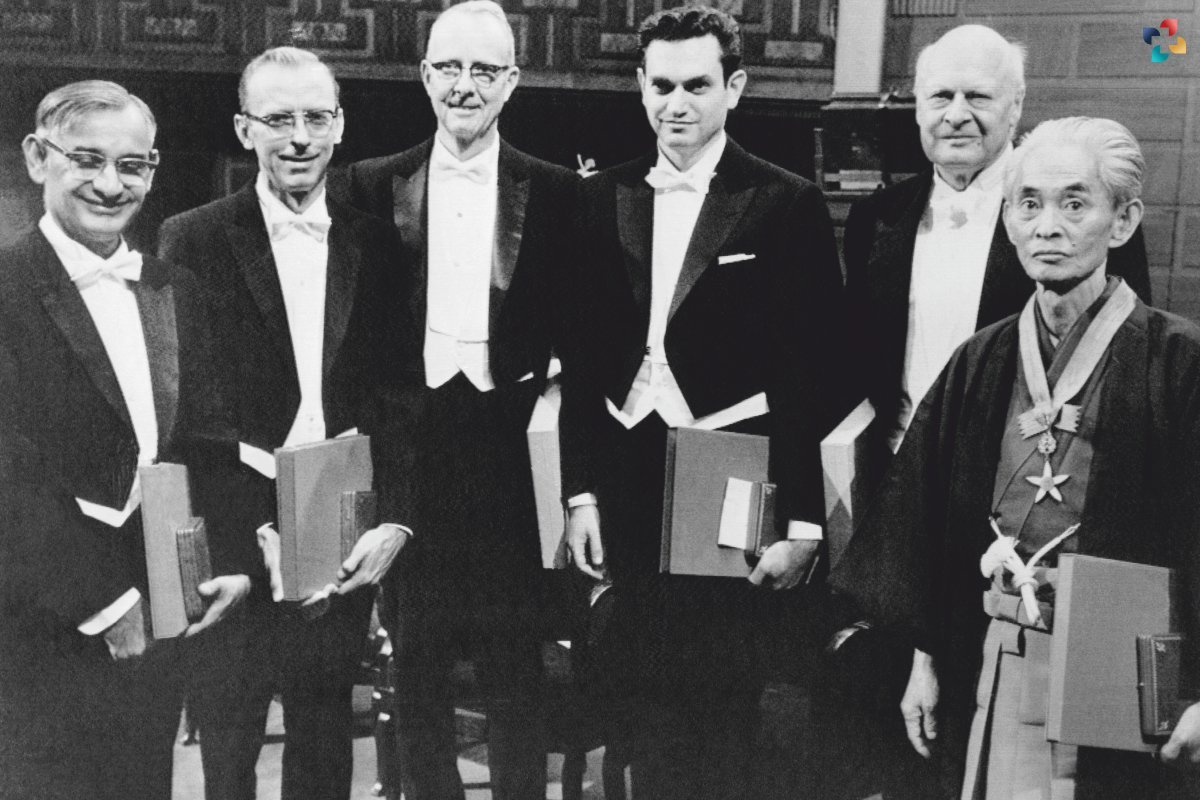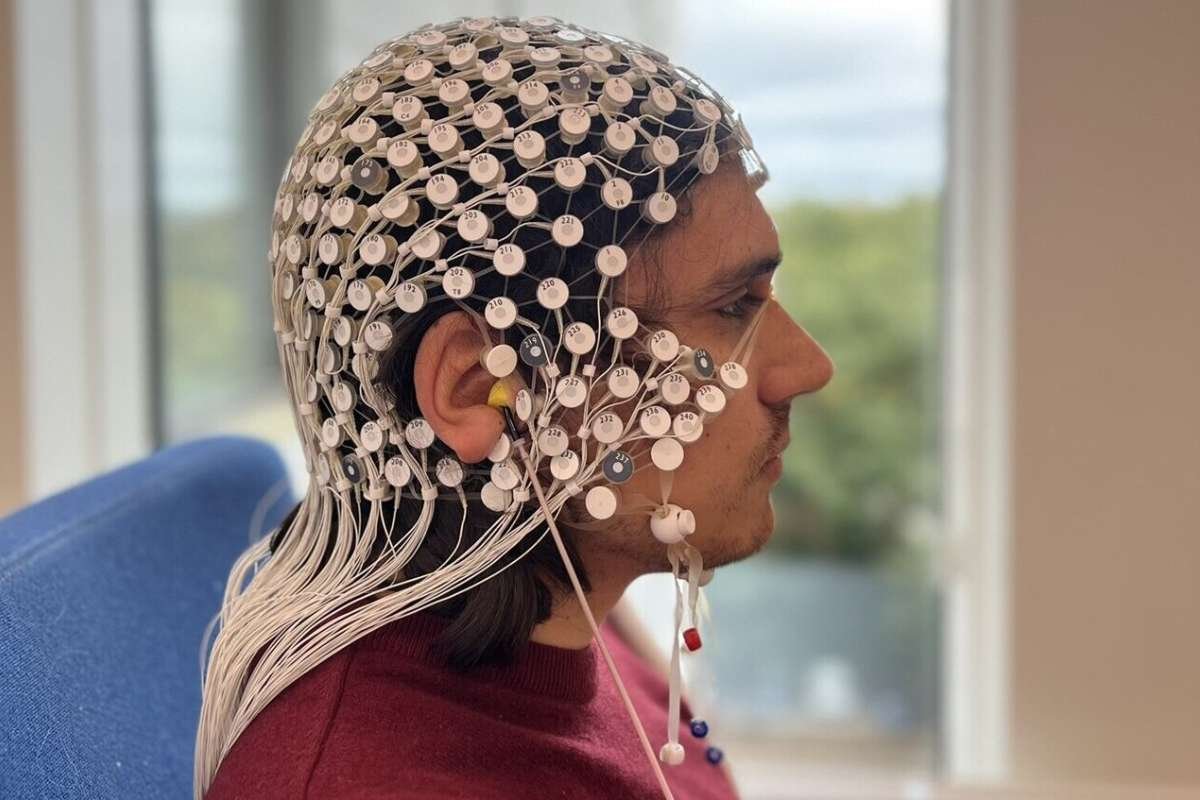The role of medicines can be described as “To cure sometimes, to heal often, and to comfort always”. India has a prolonged history of medicinal research in Ayurveda and physiology. Although physiology is presumed a modern-day science that belongs to a recent origin, many scientists in ancient India attempted scientific study in it during the early 8th and 9th centuries. Henceforth, it is obvious that India has an enduring legacy in the medical field and comprises ingenious scientists who can win the Nobel Prize.
An Indian-born American biochemist Har Gobind Khorana shared the Nobel Prize with Marshall W. Nirenberg and Robert W. Holley for physiology or medicine in 1968. Khorana’s contribution to the medical field discovered how a DNA’s genetic code determines the synthesis of protein that impacts cell functioning. Har Gobind Khorana was the first Indian scientist to win the Nobel Prize in the medical field. In this article, you can have a sneak peek into how he created history in the field of medicine that affected further studies regarding human science.
Humble Background
Har Gobind Khorana was born to an underprivileged Indian family in Raipur, a village in today’s Pakistan. His father was a Patwari who worked as an agricultural taxation clerk in his village during the British Raj in India.
While writing his autobiography, Khorana quotes his father, “Although underprivileged, my father was dedicated to educating his children and we were practically the only literate family in the village inhabited by about 100 people.” He attended the only school in his village which used to take place under a tree. In fact, he mentioned that he never owned a small pencil till the age of 6 years. In those circumstances, who would have thought this kid will go on to win the Nobel Prize?
What molded his thought process?
Being from a humble background, Khorana undertook scholarship programs for his further studies. He studied at the University of Punjab, located in Lahore, and pursued Ph. D. from the University of Liverpool through the fellowship program of the Government of India. Khorana was introduced to Western civilization and culture during his research on nucleic acids at the University of Cambridge (1951) under Sir Alexander Todd.
Eventually, Khorana found his deep interest in proteins and nucleic acids and started building roots in them at that time. During his postdoctoral stay in Zurich, he associated with Professor Vladimir Prelog and it was a life-turning decision for him. It molded his thought process and philosophy toward science, work, and effort, which accompanied him on the journey to win the Nobel Prize.
First Step to Win the Nobel Prize
Khorana grasped a fellowship and professorship in Switzerland at the Swiss Federal Institute of Technology in Canada. Later on, he continued his research on nucleotides at the University of British Columbia and at the University of Wisconsin. Soon, he became a naturalized citizen of the United States in 1966. In 1971, he joined the faculty of the Massachusetts Institute of Technology and remained part of it until he retired in 2007. Due to the vigorous research, Khorana was capable of proving how nucleotide code can be transmitted to the cell in groups of three, called codons.

The “Dream Come True” Moment!
Khorana was enthusiastic about starting his own lab. When he moved to Vancouver, British Columbia with his family, he got an opportunity to make his dream come true. He joined the British Columbia Research Council there and the University provided him with all the required facilities to start his own lab. Probably, this was his first step to winning Nobel Prize. According to the American Chemical Society, Khorana conducted a thesis on ‘nucleic acids and synthesis of many important biomolecules’.
Khorana made important contributions to this field by building different RNA chains with the help of enzymes and helped others to decipher a variety of mechanisms regarding RNA codes. Moreover, he worked on synthesizing functional genes and completed the research that led him to win the Nobel Prize. In order to honor his work, the Nobel Prize website quotes, “He made important contributions to this field by building different RNA chains with the help of enzymes. Using these enzymes, he was able to produce proteins. The amino acid sequences of these proteins then solved the rest of the puzzle.”
Noteworthy Facts about Har Gobind Khorana’s Research Work
Here are some crucial facts about the research work of Har Gobind Khorana that helped him on the journey to win the Nobel Prize.
- Har Gobind Khorana is known to be the first scientist to chemically synthesize oligonucleotides. During the 1970s, it was the first synthetic gene in the world; however, in recent years, the process has become widespread. Thereafter, subsequent scientists referred to his research while advancing genome editing with the CRISPR/Cas9 system.
- In 1972, he was the first biochemist in the world to finish the whole synthesis of a functional gene outside a living organism.
- He extended his research to DNA polymers with the help of non-aqueous chemistry and assembled it into the first synthetic gene.
- For the purpose of research, he used polymerase and ligase enzymes in order to link pieces of DNA together. The other methods anticipated the invention of polymerase chain reaction (PCR).
- Due to his research now, these custom-designed pieces belonging to artificial genes are commonly used in biology labs for sequencing and cloning. Moreover, they are used for other purposes like engineering new plants and animals that are integral to DNA analysis. It helps to understand gene-based human disease and human evolution.
- Khorana focused on using DCC to synthesize complex molecules and succeeded in synthesizing ATP. (ATP molecules are responsible for producing energy in cells.)
- In 1960, Khorana came after synthesizing the more complex molecule Coenzyme A, which plays an important part in the digestion process.
How relevant is this research today?
Inventions of Khorana have been automated and commercialized by the respective Universities. They help others to order a synthetic oligonucleotide or a gene from any company. For that purpose, you have to send the genetic sequence to one of the companies in order to receive an oligonucleotide with the sequence you desire. Khorana’s former colleagues at the University of Wisconsin conserved the summary of his work and now made it available for others to refer to. All the efforts taken by Khorana marked him as one of the most successful biological chemists of his time to win the Nobel Prize.

The “Khorana Program”
In addition to the Nobel Prize, Khorana became a member of the United States National Academy of Sciences in 1966 and a member of the American Academy of Arts and Sciences in 1967. In 2007, the Government of India (Department of Biotechnology) collaborated with The Indo-US Science and Technology Forum, and The University of Wisconsin–Madison to launch the Khorana Programme in his honor.
The main purpose of the Khorana Program was to build a seamless community that includes scientists, industrialists, and social entrepreneurs who belong to the United States and India. The program consists of the following objectives:
- To bestow a transformative research experience for graduate and undergraduate students.
- To engage the stakeholders in rural development and food security comprehensively.
- To facilitate public-private partnerships between the U.S. and India.
Later, the Wisconsin–India Science and Technology Exchange Program (WIN Step Forward, WSF) continued adopting the administrative responsibilities for the Khorana program.
Endless Series of Achievements
Khorana received other honors in his further life. The University of Columbia honored him with the Louisa Gross Horwitz Prize and the Lasker Foundation Award for Basic Medical Research. Furthermore, in 1971, he achieved the Golden Plate Award from the American Academy of Achievement. The series of achievements never stopped here, he obtained the Willard Gibbs Medal of the Chicago section of the American Chemical Society. Also, in 1980, he accepted the Gairdner Foundation Annual Award and the Paul Kayser International Award of Merit in Retina Research, in 1987.
Interestingly, a Google Doodle celebrated the achievements of Har Gobind Khorana on 9 January 2018, on the occasion of his 96th birth anniversary. Isn’t it great?

A Stable Personal Life
Khorana’s personal life is as fascinating as his professional life. He absolutely adored his job but ensured it won’t affect his family life. While visiting Prague, he met Esther Elizabeth Sibler, a Swiss woman whom he married in 1952. Khorana deeply valued the kind of stability Esther brought into his life; since he had spent the previous 6 years living away from his home country and family.
Furthermore, he was introduced to Western classical music due to Esther and subsequently she led him to develop a passion for it. According to the records, their home had paintings and a variety of books based on science, art, and philosophy.
Thereafter, Khorana also developed a deep interest in nature and he used to go hiking and swimming on a regular basis. He used to enjoy solitude time by walking alone on the streets and thinking about ways of solving scientific problems. He and Esther had three children: Julia Elizabeth, Emily Anne, and Dave Roy. All of them were born in Canada. Khorana was popular for his great modesty and humility and he stayed away from publicity.
Whilst you have reached the end of our article, we hope you enjoyed reading it and got inspired by the journey of Har Gobind Khorana. Not just Indians but the whole medical community in the world is grateful for the research that led him to win the Nobel Prize. We hope his contribution to the medical field will encourage scientists of the upcoming generation to continue the legacy of his efforts.






.jpg)
